Survivalists always seem to be forecasting the end of the world, and with the recent outbreak of Coronavirus, we are closer than ever to an apocalypse. Many people have been concerned about stockpiling food during the virus outbreak. Is it necessary, and if so, what foods should we store in our cupboards?
What Foods Are Best For Prepping?
In this guide, we look at the best foods to stockpile in any emergency, SHTF, or for good ole preparedness. Having a variety of non-perishables on hand is an excellent way to keep yourself safe in a survival event. Here are the suggestions I have on stocking up not only to stay safe from Coronavirus but from any other end-of-the-world disasters too.
Sparkling and Still Water
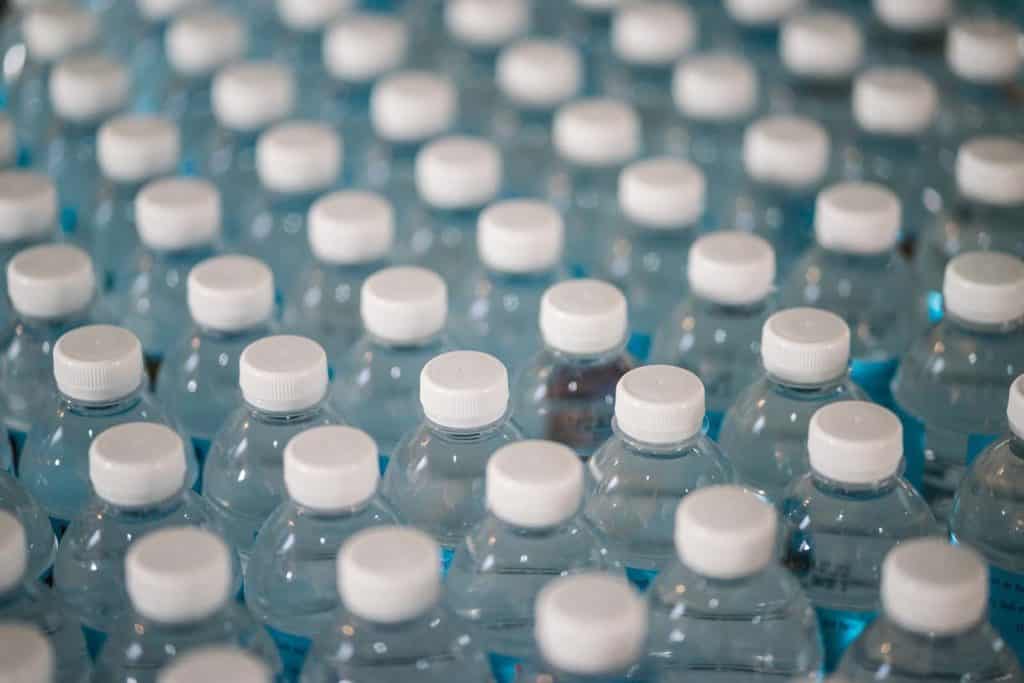
Water isn’t a food you want to stockpile, but it is an essential we cannot live without. This is why water appears as my number one stockpiling must-have for any survival situation. Distilled water is the best to go for because all of the impurities have been removed, and you will be able to drink it for years to come.
Start your stockpile with water and plan on getting more in the future. If you are a fan of sparkling water, consider adding some seltzer to your list. This lasts forever and can add a bit of fizz to your water supply.
Canned Foods High in Liquid
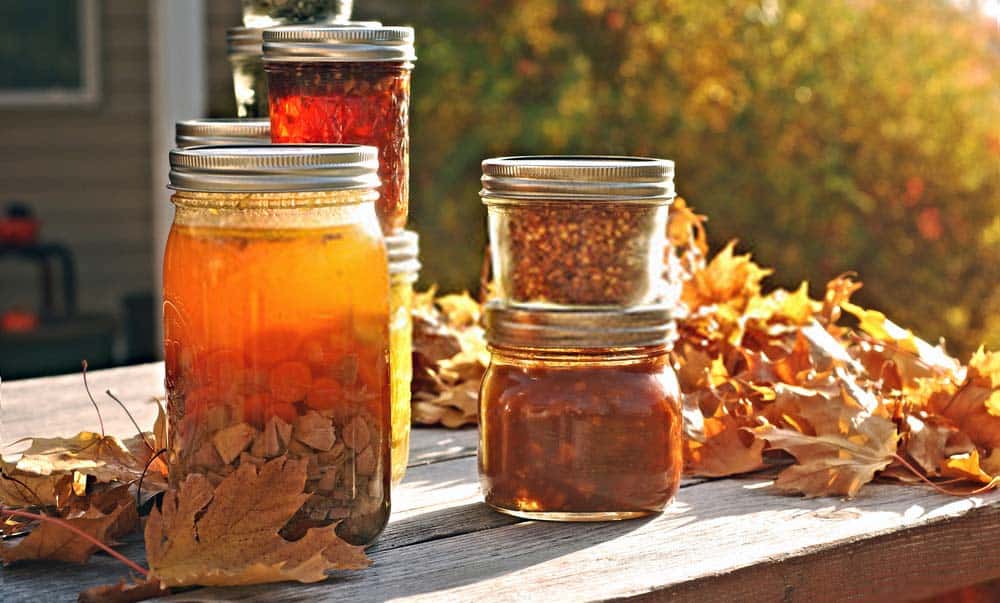
Any canned food with a high level of the liquid content is your best friend for emergency stockpiling. Two examples of this kind of food are canned pineapples or other tinned fruit and vegetables. While these things don’t fly off the store’s shelves on any normal day, during a survival situation, they can provide both hydration and nutrition when you need it most.
Other items to look out for in your stockpile are condensed milk, evaporated milk, and even coconut milk. All of these can help you cook rice without using up your drinking water, as well as add flavor to your meals. Canned beer is also another alternative to using water for cooking.
Dehydrated Foods
Powdered milk is another crucial item for your stockpile. It’s so versatile, and it’s well worth it when a survival situation happens. These powdered products have long shelf lives and require creamers and oils to be used in your drinks and food.
Whey powder is the watery part of milk that separates from the cream. It’s a highly nutritious dairy product because it contains a lot of protein and amino acids. These are all brilliant for strength and building muscles. It can be fixed with powdered milk to make protein shakes without the carbs and fat accompanying other dairy products.
Eggs are something you can stockpile because they can last a long time without being refrigerated. However, having some egg powder in your store will also give you peace of mind in a crisis.
Hard Cheeses
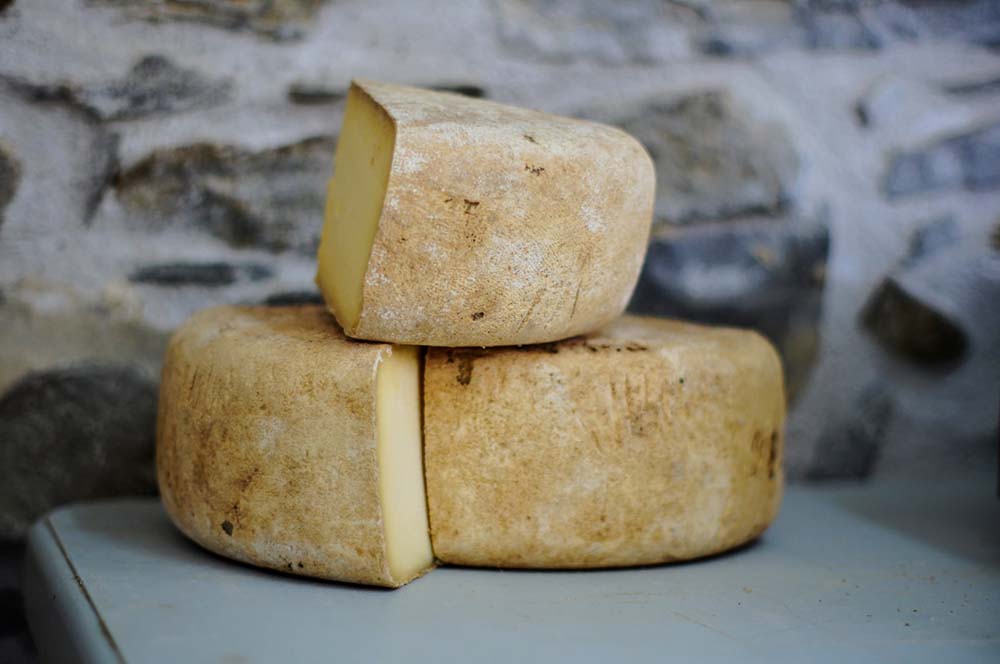
Any hard cheese encased in wax will be fine to keep in your stockpile. Parmesan, cheddar, gouda, and swiss can come with a wax casing that prevents them from going moldy during storage. The wax also keeps moisture locked in so that you can store the cheese for long periods without having to refrigerate it.
Protein Drinks and Bars
No survival backpack would be complete without protein bars and drinks. These could come in very handy when you’re trying to survive. They are high in protein and can be used for breakfast or even as a snack to boost your energy.
If you want a protein supplement that will last, why not have a go at making your Pemmican or jerky? These are both easy and cheap to make and have infinite shelf lives, so you can stock up on as much as you want without worrying about them being edible.
Dehydrated and Canned Meats
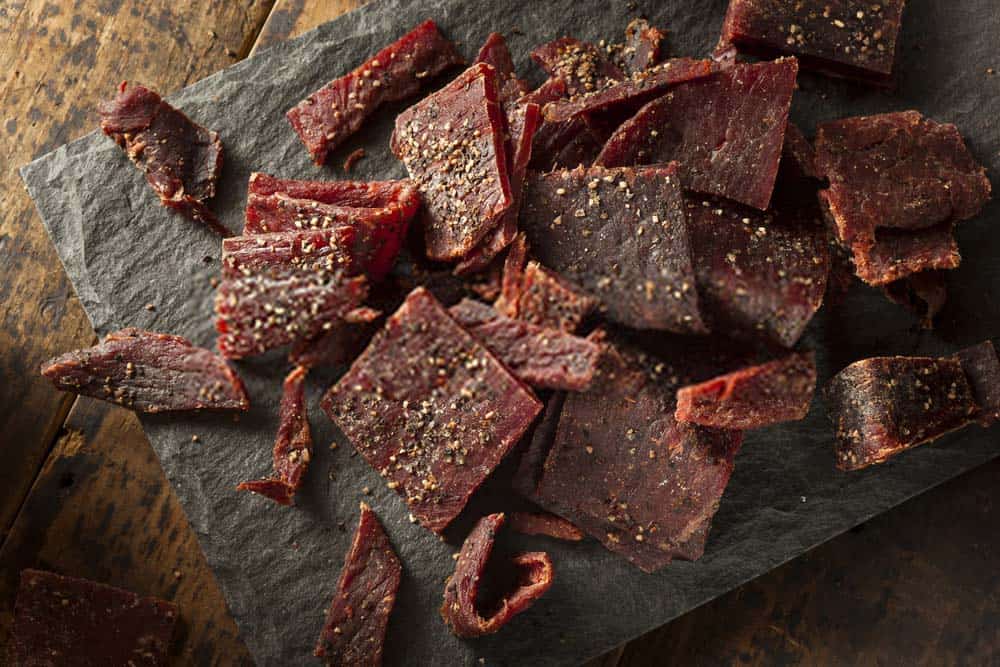
The best source of protein you will ever get in a survival situation is meat. But how do you store meat for survival when it has such a short shelf life? The answer is dehydrated and canned meats! Stockpiling jerky and meat in cans will provide you almost 90% of the sustenance you need in any crisis.
When looking for meats to stockpile, you want to choose grass-fed ones. You can also stockpile canned fish such as tuna, mackerel, salmon, and sardines. These are high in Omega 3 oils, which are also vital to your survival.
Fresh meats can be stored as well. Any meat or fish smoked, such as salmon, hot dogs, and sausages, will last a long time if you refrigerate them.
Drinks
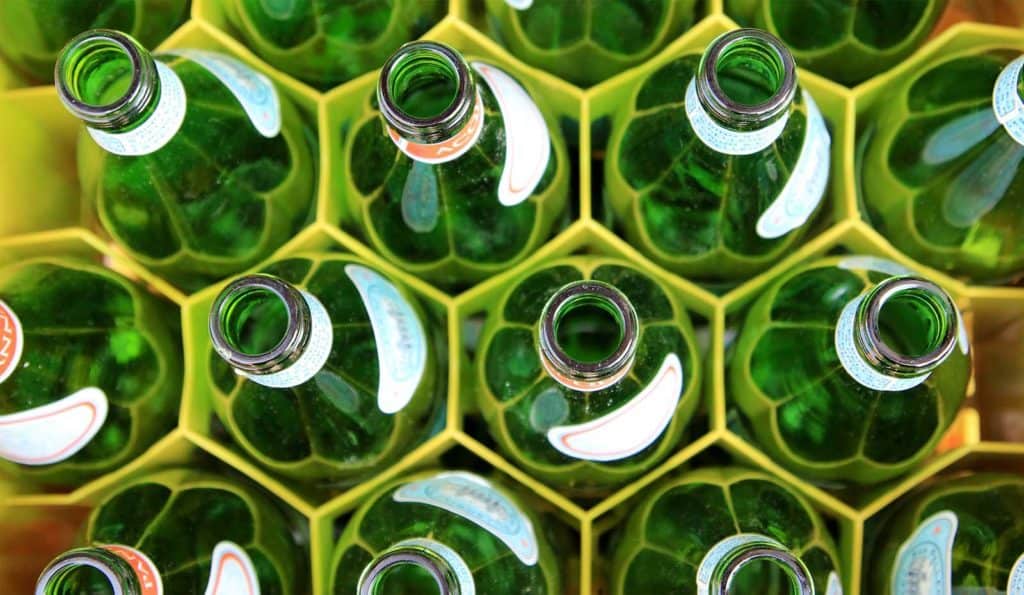
Any dry mix that can be made into a drink like tea, coffee, and Ovaltine should all be part of your survival stockpile.
- Coffee is great for surviving SHTF situations because it can increase your mental alertness and give you a morale boost when you need it most. Who doesn’t love a hot cup of joe to get themselves up and at them in the morning?
- Tea is another important thing to have in your stockpile. If your water quality isn’t great, it can improve the overall taste and can help you hydrate quickly as well. Caffeine in tea provides energy boosts when you need them the most. There are also teas available with soothing effects that may be useful in emergencies.
- Anything that can enhance the taste of your water supply, like drink mixes, is essential for your store. Tang is the number one prepper favorite, used by astronauts and survivalists. It contains Vitamin C and calcium that help you to avoid illnesses as well.
- Bouillon cubes are compressed stock cubes that are salty and can add flavor to your food. Rice, noodles, and soups can benefit from adding bouillon cubes to your stockpile.
Oils
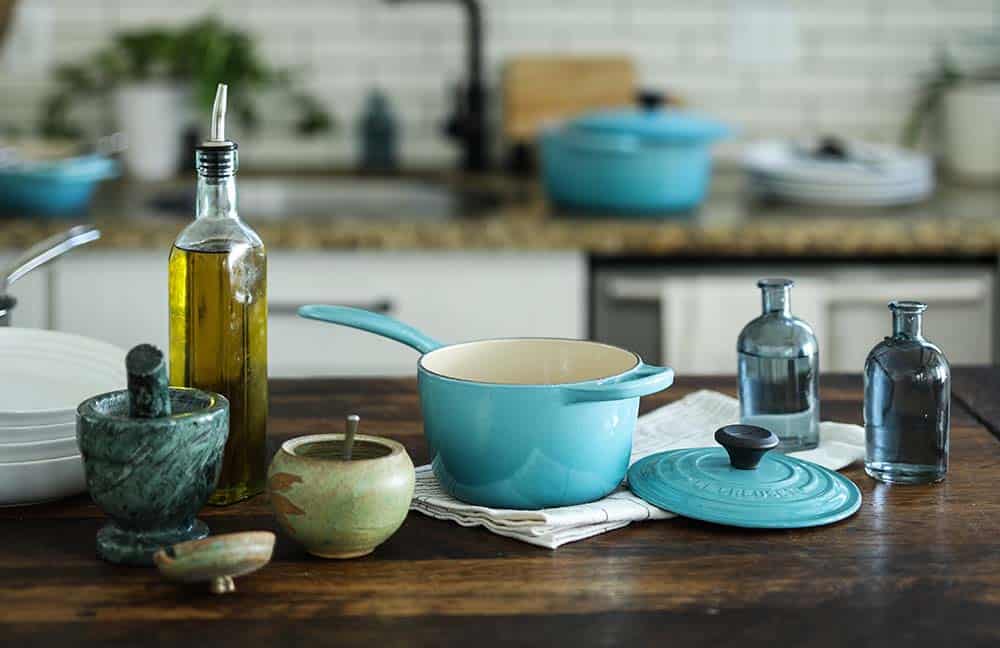
Cooking is crucial to stockpile. Not much cooking can be done without the help of fats and oils. Small containers of oils are the best ones for your stockpile as they won’t take up much room. You will also want to opt for the ones that are virgin oils, meaning they have come from the first press of the olive or vegetable and contain the most nutrients. Cooking oils don’t last very long, but when the oil goes rancid, you can use it as fuel for your bug-out vehicle in a pinch.
- Butter can be frozen, and you can also buy it canned. These kinds of butter have a long shelf life, so that they can be stockpiled. Butter can also be purchased in powder form.
- Coconut oil is a suitable alternative to shortening, which contains a lot of trans fats that may not be an ideal cooking aid in a survival situation. Coconut oil has low oxidization levels, so it doesn’t go rancid as fast as other oils.
- Ghee is an Indian butter that has been simmered and melted down so that the water evaporates, leaving behind the milk solids at the bottom. It has a long shelf life and is, once again, a healthier alternative to butter and shortening.
- Lard is a surprisingly healthy cooking fat and is versatile enough to be used in many different recipes.
- Olive oil is the ideal oil for stockpiling, but it can go rancid quickly if you don’t store it in the right temperatures. Usually, in the right conditions, you can keep olive oil for up to two years.
- The shortening that you want for your stockpile should be organic. Avoid big-name brands like Crisco because these are bad for your health. You can also use shortening to make candles if you find yourself without a light source.
Flour and Baking Mixes

If you’re new to prepping and stockpiling, you will want to keep some flour on hand in case of SHTF. Expert preppers grow their wheat, which can be ground into flour instead. You can also stock up on pancake and bread mixes high in protein, fiber, and vitamins.
White flour can be used for thickening sauces and soups or to coat food for frying. It would help if you kept some wheat flour in your prepper’s pantry because it has a higher nutritional value than white flour.
Cereals
Any cereal that your family eats regularly can be stockpiled. Oat, rice, corn, or wheat-based cereals have long shelf lives that make them perfect for storing.
Potato Flour

This is an item that is overlooked quite a lot by preppers, but it’s something that should be on the shopping list for stockpiling. It’s gluten-free and can help you make many different things in a survival situation.
- Get your daily dose of veggies. Potato flour uses the entire vegetable, including the skin, so it’s high in nutrients.
- Potato flour is awesome for thickening up stews, broths, and gravy. It’s a much healthier alternative than your conventional flours and is also tastier.
- For making bread, you can use potato flour to form your dough. This flour adds moisture to your mix, making the yeast and the dough much easier to handle.
- Potato flour holds fat and moisture, so it can be used as a binding agent for making hamburgers, meatloaf, and even frozen desserts.
- You can also coat your meat or fish in potato flour ready for frying, producing a nice golden crust.
Dried Corn
Corn is a vegetable and grain, so it should be in ample supply in your prepper’s pantry for its nutritional value. Here you want to store dried corn as a grain because it can help you to make a variety of different foods like flour.
- Cornmeal has been used for centuries. The pioneers were even noted to cram cornmeal into their packs as part of their essential provision list.
- Corn starch can be used in all types of baking.
- Grits are one of the tastiest and most basic foods in America, and they are made from dried corn grain.
- Popcorn has so many nutritional benefits, and because it’s a grain, you can ground it into flour as well.
Vegetable corn can also be stockpiled if you buy it, so it has a long shelf life. Organic corn is the best option as it won’t have been genetically modified, so it is better nutritionally.
Oats
Oatmeal is another popular food for preppers, and it has the bonus of being low in fat and high in fiber. Both of these things are more important than ever in survival situations. Oats need a lot of water to prepare, so consider your water supply and extend it if needed to suit your purposes.
Stuffing and Bread Crumbs
Casseroles are a survivalist’s best friend because they’re easy to make and store for long periods. Adding bread crumbs can boost the taste of any casserole. You could also add bread crumbs to make fish cakes. Stuffing can be a nice accompaniment to many meals, and you can buy it dehydrated or in a can for storage purposes.
Ready Meals
Any ready meals you want to add to your stockpile must be shelf-stable. This means they are either dehydrated or have a long enough shelf life to be helpful when disaster strikes. You will also have to consider how you will warm these meals up when the time comes.
Soup is a meal in a can that is shelf-stable for years. There are also boxed meals where you just add water to eat. Army supply stores sell surplus meal kits that soldiers use in Iraq and Iran when no other rations are available. These packets contain dry meals that heat themselves using a heat pack when you add water.
Cookies and Crackers
Crackers have a very low nutritional value, but that doesn’t mean you should overlook them as an accompaniment to your soups and salads. You can even eat them with peanut butter as a quick snack when you’re bugging out.
Rice
When stockpiling rice, you want to opt for white rice. Other types may be cheaper, but they will go off much quicker when you store them. Brown rice is a healthier alternative, but it takes longer to cook, depleting your resources faster. It also doesn’t store as well as white rice does.
Pasta
Dried pasta is easy to cook and is resistant to spoilage when stored for long periods. It’s also filling when you eat it and is relatively cheap to buy. Any kind of pasta will store just fine, as well as noodles, so get as much of it as you can for your stockpile.
Dried Fruit
You can dry all types of fruit and take them with you when you bug out as part of your survival kit. These are great on the go as a quick snack and are full of nutrients and vitamins. Raisins are normally the number one choice for many preppers because they are tasty and can enhance other food, such as rice.
Jellies and Jams
Jellies and jams are something you can make for yourself at home and then preserve in mason jars as part of your stockpile. Canning is simple and can be made from any fruit you want to add a little bit of sweetness to your rations.
Canned Fruit
Fruit can give you twice as many calories as vegetables could provide. Products such as canned fruit cocktails are packed with calories and give you a boost that is much needed when trying to survive. The liquid from the cans can also help with your hydration, and any citrus fruit will be a great source of vitamins.
Canned Vegetables
The typical veggies to go for will be canned beans and peas. These don’t pack as many calories as other vegetables will. The ones you want to focus your emergency food supply efforts on are root vegetables such as yams and potatoes. These are much more filling and are packed with vitamins as well.
Beans are a big one to store, both canned and dried. They are a superb source of energy and fiber and pack a lot of calories as well. If you find yourself running low on beans during a survival situation, you can even sprout your own from dried ones. It only takes around five days for a bean to begin sprouting.
Nuts and Seeds
Many preppers will have shelves full of peanut butter, but don’t be afraid to try almond or sunflower seed butter. Nuts can go off quite quickly, but they do provide energy when eaten, so it’s worth having them in your pantry. Just make sure to keep rotating your stock to avoid mass spoilage.
Honey
Even if honey isn’t something you regularly buy, you should have some in your stockpile. Boring grains and oatmeals can be livened up with the addition of honey. It also has medicinal properties that can be used on wounds and sore throats.
Salt
Salt is an incredibly important commodity in survival times. Not only does it add flavor to your cooking, but it also can help kill bacteria, and you can even use it to barter for more supplies. You need salt to live, so it’s a big one to have as part of your stockpile. Experienced preppers may even use their salt stocks to start preserving food.
Sugar
Brown, cane and powdered sugar should all be on your stockpile shopping list. If any of these come in boxes or paper bags, transfer them to plastic containers as soon as possible to avoid spoilage. You should also try to buy sugar that is wrapped in plastic so that it can be protected from insects and pantry pests.
Herbs and Spices
Spices may not seem important when you’re trying to survive, but they can give you a flavor boost that is much needed when morale is low. Chilli, saffron, ginger, rosemary, and many more popular herbs and spices can be bought, dried out, and added to the shelves in your pantry.
Sauces and Condiments
Another item that isn’t essential but can make things seem a little brighter is sauces and condiments. Mustards and mayos should be bought in small tins as they go bad quickly once opened. Tabasco, soy, and Worcestershire sauce all add flavor to our food and have a long shelf life.
Rules for Stockpiling
Now you know what foods to stockpile; you should also know the rules that accompany creating your supply.
Buy what you will use
There’s no reason to buy anything you won’t end up using. Buy things that you would eat and use in your everyday life. Then when they are reaching their expiration, you can use them during your normal life and replace them. Avoid anything you wouldn’t want to eat on an everyday basis.
Check your stock beforehand
If you are an avid stockpile and need to refresh your store, you should check what you have before you go out and buy more. Many things may already be stored in your freezer or cupboard that you have forgotten about.
Don’t overspend
There’s no need to blow the big bucks on stockpiling. Work out an affordable budget for you, and then buy little and often as your cash flow allows. You can also get a lot more for your money if you stay away from the big brand items. Store’s special offers can also add up to savings. Reduced food items are brilliant for the freezer to save you money.
Check the expiration dates
Some food isn’t suitable for stockpiling because it has a short shelf life. You can use the guide of items above to ensure you aren’t storing anything that will go off. Check all of your tinned items for the longest expiration dates possible. It’s also important to remember not to eat anything past its use-by date. Even when stored properly, this food can still make you seriously ill.
Remember other necessities
It’s not just food you will need to stockpile if the end of the world finally arrives. Things like toiletries and cleaning products may be affected in disaster situations. Pets are something else you will have to think about, as even their food will be in short supply.
Final Words
There’s no need to let things go to waste if you plan on stockpiling. Keeping supplies on hand is always a good idea, especially in situations like the pandemic we have been presented with now. If you don’t use everything, then donate it to your local food bank. Make sure everything is in date before you either use it or give it to those in need.


